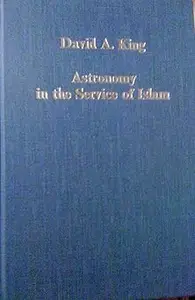
Free Download David A. King, "Astronomy in the Service of Islam "
English | ISBN: 086078357X | | 352 pages | EPUB, PDF | 30 MB + 64 MB
Based on a wide variety of previously unstudied sources, these articles explain how science was applied to three aspects of Islamic ritual in the Middle Ages: the regulation of the lunar calendar; the organisation of the times of the five daily prayers; and the determination of the sacred direction (qibla) towards the Kaaba in Mecca. Simple procedures of folk astronomy were used by the scholars of religious law who determined popular practice; more complicated mathematical methods were provided by the scientists - and this proved a powerful incentive for the development of scientific analysis and research. Some of these procedures were to have far-reaching consequences. For example, the astronomical alignment of the Kaaba - known to various medieval writers, but long forgotten - led to the adoption of similar alignments for the qibla, and the final articles show how these were calculated, whether from astronomical observation or geographical computation, and their impact on the orientation of religious and secular architecture across the Islamic world. C'est à partir d'une grande diversité de sources inexplorées que ces articles expliquent comment la science avait été appliquée a trois aspects du rituel islamique au Moyen Age: la régulation du calendrier lunaire; l'organisation des heures assignées aux cinq prières quotidiennes; et l'établissement de la direction sacrée (qibla) vers la Kaaba de la Mecque. Des procédés simples d'astronomie populaire étaient utilisés par les érudits en droit religieux qui décidaient de la pratique populaire; des méthodes mathématiques plus complexes étaient offertes par les hommes de science - ce qui, en effet, s'avèra être une motivation puissante dans le développement de l'analyse et de la recherche scientifique. Certains de ces procédés eurent des consequences d'une grande portée par la suite. L'alignement astronomique de la Kaaba - pour ne reprendre qu'un exemple connu
Read more
